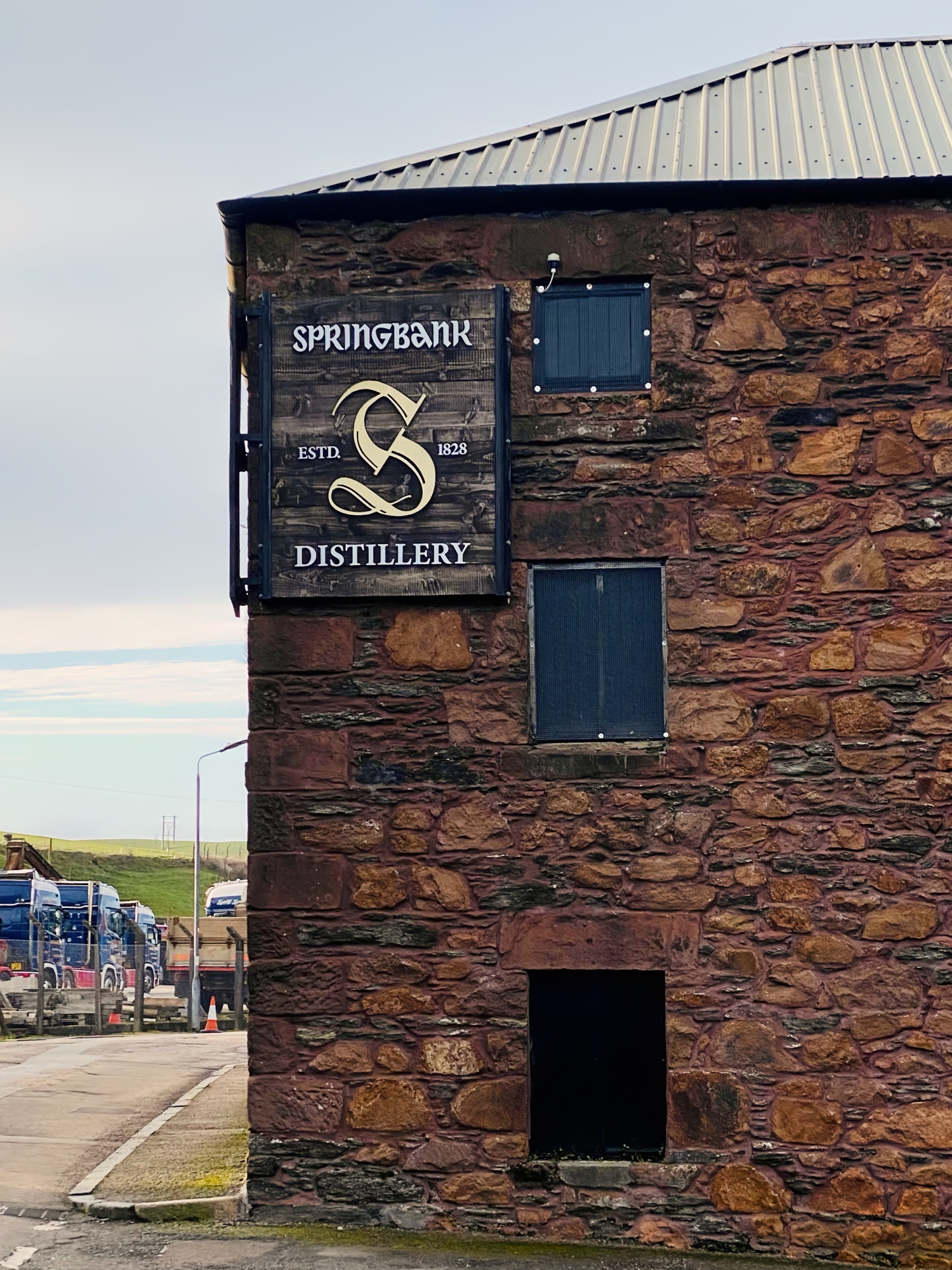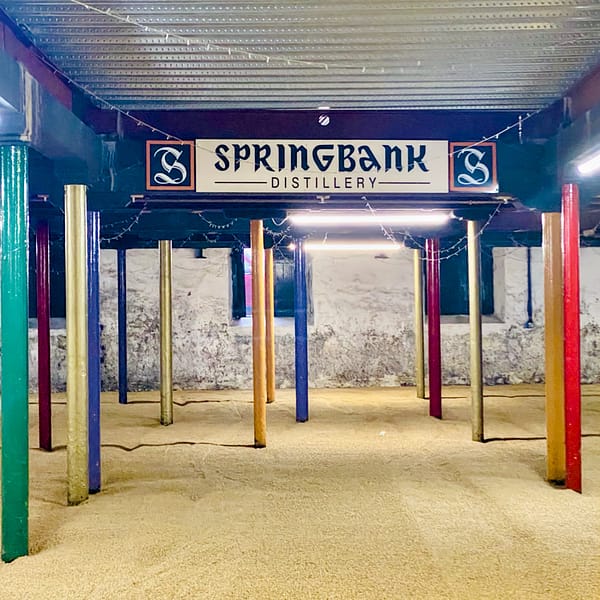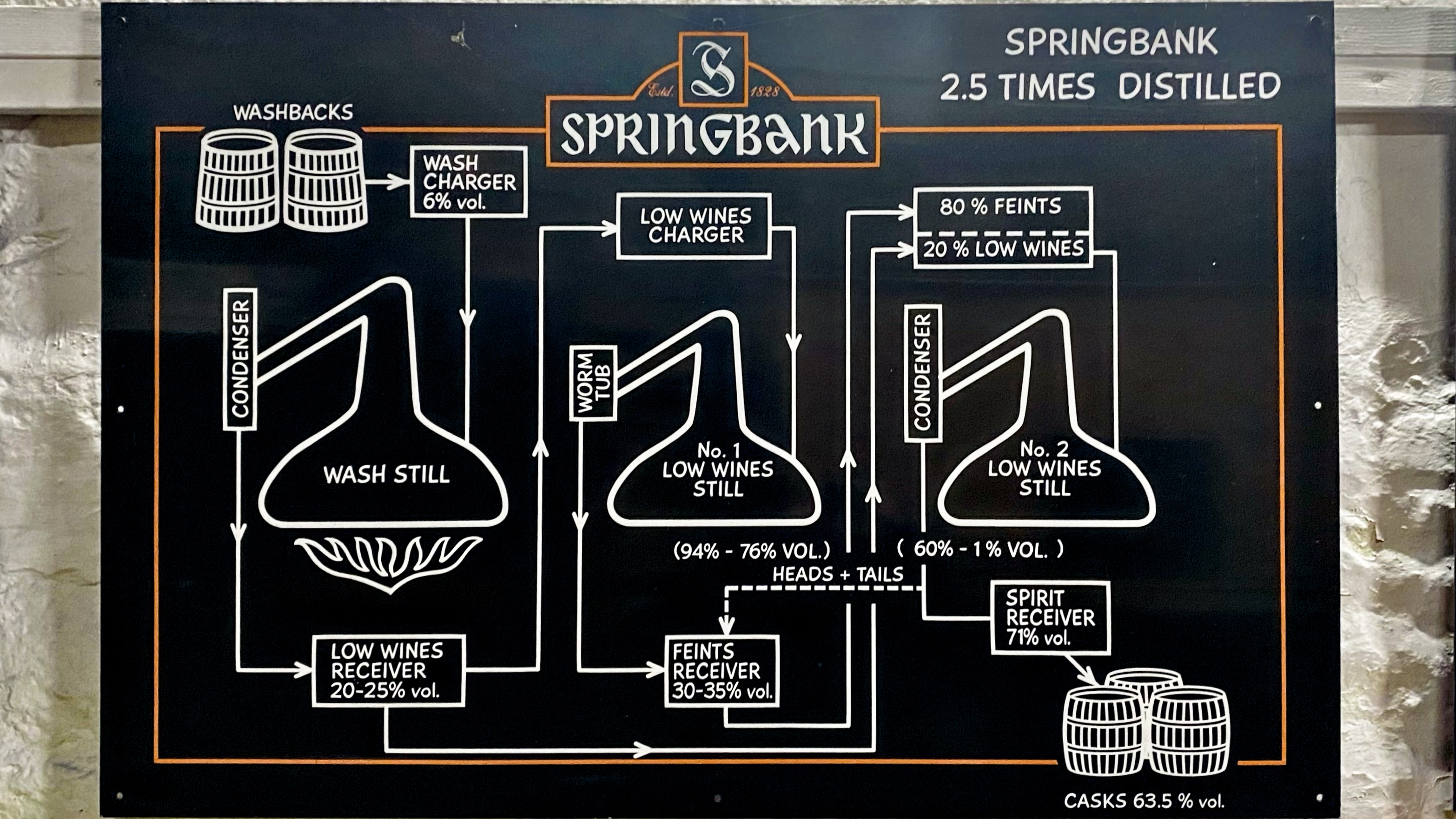This post is a departure from my reviews. Today I want to bust a whisky myth. Specifically, the myth that “Springbank doesn’t do marketing”. It is a belief that seems to permeate the whiskysphere. I have heard in WhiskyTube videos, written in online forums and more. As someone who works in marketing, outside of whisky, it drives me mad. On one side, it shows a lack of understanding of what marketing actually is. If you only have a vague idea of what marketing does, you might find the post below informative. On the other side, some believe marketing to be “the source of all evils”. I will try to show you otherwise and demonstrate that, in the right hands, marketing can do good.
If you believe Springbank doesn’t do marketing, I might shake some of your beliefs. And if I didn’t upset some Springbank lovers with my Campbeltown Loch review, I suspect I will manage to do so today. By the end, I hope I will have convinced you that Springbank not only does marketing… but also that it does so in a unique way whisky geeks like us should admire.
The dirty M word
In the whisky consumer world, marketing is often blamed for everything bad that happens. Price hikes? Marketing. Disappointing NAS special releases (yes Diageo I am looking at your overpriced special releases)? Marketing. Discontinued favourites replaced by lesser releases? Again, marketing.
These are just some of the “whisky evils” we whisky geeks deem marketing guilty of. Spend a few hours browsing at some of the most popular YouTube channels dedicated to single malts and you would be justified in thinking that marketing is the whisky devil incarnate. I could argue that these are not marketing decisions, but they 100% are. There is certainly a solid reason for the dislike whisky lovers have for marketing.
Yet, as someone who has worked in marketing for many years in a different industry, I am often frustrated by discussions surrounding my profession in whisky circles. The understanding of what “Marketing” is, as a discipline rather than a job title, remains very superficial. Marketing more often than not is seen as simply advertising, which is only a part of it. It is undeniable that in some cases the Marketing Department’s role may be limited to providing promotional support. But to see marketing as just advertising is missing a chance to understand how marketing affects your favourite drink, positively and negatively.
Marketing is a lot more than that. It goes beyond the Marketing Department’s job description If you want to understand how distilleries plan their strategies, we should understand what marketing comprises. Doing so will give you the tools to better understand the decisions, good and bad, your favourite distilleries make. And to blame or praise marketing when it is deserved, not when a scapegoat is required.
This brings us back to today’s myth-busting: Springbank. Once you frame the discussion this way, you start noticing how Springbank undoubtedly has a marketing strategy, one that is pretty unique and which, instead of working you up, might make you even more of a fan of this distillery if you aren’t already.
Let’s begin with the following: What is marketing, really?
The definition of marketing is not static and has changed with time. So there are many definitions out there. I am choosing the one below, from one of the best minds in marketing. It is one of the clearest I have come across and will be useful for our discussion. Sure picking one is arbitrary, but this is my blog after all.
Philip Kotler’s 2018 definition describes Marketing in a way that is not excessively technical and captures its essence:
The process by which companies engage customers, build strong customer relationships, and create customer value in order to capture value from customers in return
Kotler, Philip; Gary Armstrong (2018). Principles of marketing (Seventeenth ed.). Hoboken.
How does any company achieve this goal? This is where most misunderstandings on what marketing does find their roots. Companies do not and cannot rely only on advertising. They use a wide range of tools. The way a company plans this process and the tools used are often called the Marketing Mix. These tools also provide a framework to understand how any company approaches marketing.
As with the definition of marketing, the marketing mix has had many different models, with the digital space forcing a lot of thought on the tools and strategies used. I will stick to a popular description of these tools called “the 4P model”, not because it is the most current one or most complete one, but because it makes it easier to describe how a distiller like Springbank does marketing to those of you who don’t work in the field.
What are these blasted 4Ps?
Unless you work in marketing or have studied business, you probably have never heard of the 4Ps. So what are these tools that marketing relies on? They are:
- Product: this is the Product itself. This includes the physical attributes of the product. in our case things like flavour, ageing, chill-filtration, etc., and how these relate to the customer’s need. It also includes Branding which is extremely relevant for for Springbank.
- Price: The pricing level for your product, but also the price that the consumer pays for the product. The fact that pricing encompasses both is important for our discussion, as anyone who’s tried to grab any of the special editions (Local Barley at RSP?) knows too well.
- Place: also known as Distribution, i.e. how the product reaches the consumer. Or how it doesn’t, if you wanted to be cynical about Springbank.
- Promotion: we finally get to what many see marketing as. This is what creates awareness of a product. Promotion can include advertisement, sales promotions, celebrity endorsements but also events, education and public relations. And contrary to what you think, Springbank does do promotion
So, how does this help us bust the myth that Springbank does not do marketing?

Looking at Springbank through the marketing mix lens
Let’s me start by saying something which might be obvious. Different marketing strategies use the 4Ps differently and Springbank relies heavily on the product, both in its physical form and the brand which goes with it. So, as far as Springbank is concerned I am only briefly going to talk about Price and Place. And a little bit about promotion.
Pricing is one of the areas marketing catches more flack, especially with the dreaded “Premiumisation” concept which companies like Diageo rely so much on. Springbank’s Pricing strategy is a well-intentioned one, but one doomed to struggle in practice. I admire the strategy set for its products’ RRP (which you can check on their website). If that were what consumers pay, it would make me love Springbank even more. Unfortunately, unless you happen to be in Campbeltown or near a Cadenhead’s shop when the whiskies are released, or have access to a very honest whisky shop near you, it is extremely unlikely you will ever pay that price.
The main reason is that as a small distillery, even if a cult one, the power Springbank has over its distribution is limited and so is its ability to control consumer pricing. The collector status of these whiskies inevitably drives up the end price. The high demand allows retailers to raise prices without consumer resistance. We can complain all we want, but I do not see huge changes coming. We will be stuck with the inflated consumer price tags, unless flippers find a new golden goose to exploit or unless we whisky drinkers leave those unicorn bottles to gather dust on shop shelves until prices get closer to RRP.
So you believe Springbank doesn’t do promotion, do you?
Am I being a bit confrontational with the title above? Maybe a bit. When I hear the statement that Springbank does not do marketing, I believe that translates to believing that Springbank does not advertise. And ironically this is very easy to disprove. Springbank certainly does not mimic the activities other distilleries focus on so much today like lifestyle marketing, digital promotions and so on. But it does promote itself without a doubt.
Take away any preconceptions and you will realise Springbank does promotion, it just does so following its own drumbeat. The way the distillery operates is so unique that it becomes one of its most characteristic promotional hooks. Whisky geeks like us are willing to pay good currency to attend Springbanks’s Whisky School (fully booked for years to come) and the Barley to Bottle experience, two almost textbook-perfect examples of promotional education. Similarly, Campbeltown’s whisky festival and Springbank’s open day during the same are a typical event-based promotion. They might be less common promotional tools but they are types of promotion nonetheless.
And, just to put the cherry on the cake, Springbank just announced a collaboration with the band Travis. This is a promotion very much in the celebrity collaboration mould many other brands use. Maybe Springbank is killing the myth about their marketing for me already!
Yet, even if Springbank does after all do promotion, it is a minor element in their marketing. The two aspects that have the strongest impact are its product and its brand.
Springbank’s core: the product
Stating that Springbank’s main selling point is its product, is self-apparent to anyone who considers themselves a whisky lover, geek, etc. The whisky is made in a way no other distilleries imitate. I covered this in part in my Springbank 10 review but have to highlight a few points here.
We know that Springbank does things differently. Often the way things are done here is called traditional or old fashioned. It is definitely unique. How many distilleries make 3 brands of whisky (4 if you consider Glengyle/Kilkerran, produced in a different distillery by the same crew)? And not just 4 brands made similarly but made with different distillation strategies from each other? How many distilleries still malt all of their barley?
What is maybe less appreciated, is how intentional this is. This is not something that has remained in practice due to a lack of change. This is not tradition for tradition’s sake. Springbank has not always produced Longrow and Hazelburn, nor has it always malted its own barley. This intentionality moves this decision from a perceived “traditional way” to a clear strategy of how the distillery wants to position itself versus its peers.

Like many other distilleries at the time, Springbank stopped in-house maltings in 1960 (according to Ingvar Ronde’s Malt Whisky Yearbook). It would not be until 1992, a whole 32 years later, before maltings restarted at the distillery. This was at a time when almost every distillery had already stopped malting in-house or was in the process of doing so. While some distilleries (both older ones like Laphroaig and new ones like Kilchoman) malt part of their barley, Springbank is, to my knowledge, the only one doing so for 100% of their malt.
Likewise, the decision regarding Springbank’s other brands is far from casual. Both Longrow and Hazelburn have been added to SPringbank’s lineup at a later stage. Peated double-distilled Longrow has been made since 1973 and triple-distilled Hazelburn since 1997. These are part of a specific decision on how to offer options to consumers for the product made at Springbank. This is not an undertaking to take lightly and it requires time and dedication. Considering the changes in distillation regimes and malt used, the production of the three brands also impacts productivity.

Prioritising flavour concentration and intensity at lower yields vs high volume is a clear product strategy. You might not see product strategy as part of marketing. Yet product is a key part of the tools of marketing because it is what ultimately drives value. Take other examples in the industry. When Bunnahabhain decided to go from 40% to 46% abv years ago, or when Glendronach took the regrettable decision to remove the “non-chill filtered” information from its labels these were active marketing decisions (independently of the involvement of the marketing team of the two distilleries).
These are decisions that create (or dilute in Glendronach’s case) the ultimate value we get as a customer. In return, this captures (or doesn’t) our value, our cash that is, which, just as Philip Kottler stated, is what marketing is about.
And yet, there is another, much bigger product-related project Springbank has invested millions in, a project all to do with branding. Just not Springbank’s brand per se.
Springbank’s other brand: Campbeltown rather than Kilkerran
When I see Springbank, Longrow and Hazelburn, I see options providing customers with choice. But ultimately the three brands also represent something else. The three brands express a desire to bring back styles of legacy distilleries from Campbeltown’s golden days as “the capital of Scotch whisky”. And if you look at its history Springbank is linked to Campbeltown almost as strongly as it is to its own whiskies.
This brings me to the last piece of the marketing puzzle needed to bust the myth: Glengyle and the Kilkerran brand of single malts.
When we look at Springbank’s owners J&A Mitchell’s investments, I challenge anyone to disproof that the single largest one in the past half century was the re-opening of Glengyle. Re-opening is a bit of a euphemism since the old distillery was nothing but walls when the project started. Recreating Glengyle is likely more appropriate,
It has been widely suggested this was done to keep the Campbeltown region alive. At the turn of the year 2000, the SWA was apparently considering folding Campbeltown, and its two only distilleries (Springbank and Glen Scotia) into the Highlands. Since the Lowlands, with three distilleries at that time, were considered safe, opening a third Campbeltown distillery saved the day. You could argue that this is very much hearsay. But let’s look at the impact on Springbank.
Opening a second distillery can make sense if your first one is at capacity. Yet Springbank produces far less (265,000 l/pa according to the figure I got at the distillery in March) than its nominal 750,000 l/pa capacity.Glengyle essentially operates only part of the year, manned by Springbank’s own staff, again impacting Springbank’s overall production capacity. So Springbank certainly didn’t open Glengyle to increase its production. The story around keeping Campbeltown alive seems quite plausible.
How much did opening Glengyle cost? I could not find any detailed financial figures, but we can infer that the investment must have been in the millions of pounds. Looking at newer distilleries as examples we know that Ardnahoe cost 8 million pounds while the upcoming Dal Raita distillery in Campbeltown is expected to cost around 4.5.
Investing millions to reopen Kilkerran and keep the Campbeltown name going is, in my eyes, THE single biggest whisky marketing activity ever carried out by an independent producer. An operation that benefitted Campbeltown itself and will benefit future distilleries in the region. But mainly an operation that kept Springbank’s historical and regional heritage alive. Who knows where Springbank would be without the Campbeltown “brand”.
The myth is BUSTED
If you got to this point I hope I have at least started to put some dents in the belief that marketing is a dirty word in whisky. But that’s not why you are here. Did I manage to bust the myth that Springbank does not do marketing? I do believe I did.
I could have focused solely on the pure promotion part, which is easily disproved. Springbank after all does promotion but does so differently than others. Yet the main reason to bust this myth is that once we accept that the product and brand are key marketing aspects, it becomes easy to see how much this company has invested and how deliberate certain decisions are… in other words, we see how Springbank uses its product, its unique production and Campbeltown itself as a way to promote itself. Instead of looking at marketing as the whisky devil, maybe we should start talking about smart, consumer-friendly whisky marketing vs greedy, profit-driven marketing.
I hope you enjoyed this departure from my normal reviews, and hopefully, I manage to keep the ramblings at a minimum. Stay tuned as I take a bit of a break from Scotland and move to more emerald shores.
If you have enjoyed this content, please share a comment below and consider supporting the cost of this blog via the button below